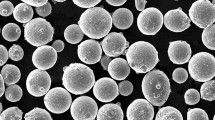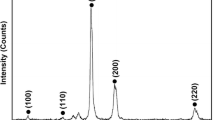Abstract
The relationship between macroscopic tribological behavior and subsurface micro/nano-structural evolution needs to be studied in detail. We report here the results of dry sliding tribological tests of Ni3Al matrix composites with 1.5 wt% graphene nanoplatelets (GNPs) under different loads. We found that the friction coefficient decreased with increasing load, while the wear rate showed a downward trend after an initial increase. During the sliding wear process, severe plastic deformation and an accumulation of friction heat caused the formation of an ultrafine layer (UL) and a matrix refinement layer (MRL). The UL contributes to the reduction of friction coefficient and wear rate, and the MRL contributes to the improvement of wear resistance. In addition, GNPs accumulating in the UL tend to be parallel to the worn surface, causing a reduction in friction and an increase in wear resistance for the properties of easily shearing off and high tensile strength. The hardness and elastic modulus of the UL and MRL increased due to grain refinement and the accumulation of GNPs in these layers. The effective hardness of the multilayer was approximately 7.2 GPa.















Similar content being viewed by others
References
Karin, G., Luo, H.L., Feng, D., Li, C.H.: Ni3Al-based intermetallic alloys as a new type of high-temperature and wear-resistant materials. J. Iron. Steel Res. Int. 14, 21–25 (2007)
Fujii, H., Nakajima, K., Goto, A.: Infiltration and combustion synthesis of an intermetallic compound Ni3Al. Mater. Sci. Eng., A 223, 21–28 (1997)
Huang, B., Xiong, W.H., Yang, Q.Q., Yao, Z.H., Zhang, G.P.: Preparation, microstructure and mechanical properties of multicomponent Ni3Al-bonded cermets. Ceram. Int. 40, 14073–14081 (2014)
Chaki, T.K.: Boron in polycrystalline Ni3Al-mechanism of enhancement of ductility and reduction of environmental embrittlement. Mater. Sci. Eng., A 190, 109–116 (1995)
Zhu, S.Y., Bi, Q.L., Yang, J., Liu, W.M.: Influence of Cr content on tribological properties of Ni3Al matrix high temperature self-lubricating composites. Tribol. Int. 44, 1182–1187 (2011)
Karin, G., Luo, H.L., Feng, D., Li, C.H.: Wear of Ni3Al-based materials and its chromium-carbide reinforced composites. Wear 265, 1751–1755 (2008)
Stadler, Z., Krnel, K., Kova, J., Kosma, T.: Tribochemical reactions on sliding surface of the sintered metallic brake linings against SiC ceramic brake disk. Wear 292–293, 232–238 (2012)
Kato, T., Kawaguchi, M., Sajjad, M.M., Choi, J.: Friction and durability characteristics of ultrathin perfluoropolyether lubricant film composed of bonded and mobile molecular layers on diamond-like carbon surfaces. Wear 257, 909–915 (2004)
Xu, Z.S., Shi, X.L., Wang, M., Zhai, W.Z., Yao, J., Song, S.Y., Zhang, Q.X.: Effect of Ag and Ti3SiC2 on tribological properties of TiAl matrix self-lubricating composites at room and increased temperatures. Tribol. Lett. 53, 617–629 (2014)
Yong, R.J., Kinloch, I.A., Gong, L., Novoselov, K.S.: The mechanics of graphene nanocomposites: a review. Compos. Sci. Technol. 72, 1459–1476 (2012)
Zhang, S.L., Li, Y.M., Pan, N.: Graphene based supercapacitor fabricated by vacuum filtration deposition. J. Power Sour 206, 476–482 (2012)
Zhang, K., Zhang, L.L., Zhao, X.S., Wu, J.S.: Graphene/polyaniline nanofiber composites as supercapacitor electrodes. Chem. Mater. 22, 1392–1401 (2010)
Balandin, A.A., Ghosh, S., Bao, W.Z., Calizo, I., Teweldebrhan, D., Miao, F., Lau, C.N.: Superior thermal conductivity of single-layer graphene. Nano Lett. 8, 902–907 (2008)
Berman, D., Erdemir, A., Sumant, A.V.: Reduced wear and friction enabled by graphene layers on sliding steel surfaces in dry nitrogen. Carbon 59, 167–175 (2013)
Belmonte, M., Ramirez, C., González-Julián, J., Schneider, J., Miranzo, P., Osendi, M.I.: The beneficial effect of graphene nanofillers on the tribological performance of ceramics. Carbon 61, 431–435 (2013)
Nieto, A., Lahiri, D., Agarwal, A.: Synthesis and properties of bulk graphene nanoplatelets consolidated by spark plasma sintering. Carbon 50, 4068–4077 (2012)
ASTM Standards E92-82: Standard Test Method for Vickers Hardness of Metallic Materials. ASTM Int, West Conshohocken (2003)
ASTM Standards B962-08: Standard Test Methods for Density of Compacted or Sintered Powder Metallurgy (PM) Products Using Archimedes’ Principle. ASTM Int, West Conshohocken (2008)
ASTM Standards G99-95: Standard Test Method for Wear Testing With a Pin-on-Disk Apparatus. ASTM Int, West Conshohocken (1995)
Somekawa, H., Mukai, T.: Effect of grain refinement on fracture toughness in extruded pure magnesium. Scripta Mater. 53, 1059–1064 (2005)
Xu, X.F., Zhao, Y.G., Ma, B.D., Zhang, J.T., Zhang, M.: Rapid grain refinement of 2024 Al alloy through recrystallization induced by electropulsing. Mater. Sci. Eng., A 612, 223–226 (2014)
Huang, J., Xu, Z.: Evolution mechanism of grain refinement based on dynamic recrystallization in multiaxially forged austenite. Mater. Lett. 60, 1854–1858 (2006)
Onions, R.A., Archard, J.F.: The contact of surfaces having a random structure. J. Phys. D Appl. Phys. 6, 289–304 (1973)
Cogdell, J.D.: A convolved multi-Gaussian probability distribution for surface topography applications. Precis. Eng. 32, 34–46 (2008)
Liu, Y., Jian, W., Wang, J.Y., Hofmann, S., Kovac, J.: Influence of non-Gaussian roughness on sputter depth profiles. Appl. Surf. Sci. 276, 447–453 (2013)
Raju, S.V., Oni, A.A., Godwal, B.K., Yan, J., Drozd, V., Srinivasarr, S., Lebeau, J.M., Rajan, K., Saxena, S.K.: Effect of B and Cr on elastic strength and crystal structure of Ni3Al alloys under high pressure. J. Alloys Compd. (2015). doi:10.1016/j.jallcom.2014.09.012
Qin, M., Zhang, Y.Z., Zhu, J., Luo, X.: The effect of dynamic frictional heating on the dry sliding behaviors of M2 steel against GCr15 steel. Wear 261, 767–772 (2006)
Sakai, T., Belyakov, A., Kaibyshev, R., Miura, H., Jonas, J.J.: Dynamic and post-dynamic recrystallization under hot, cold and severe plastic deformation conditions. Prog. Mater Sci. 60, 130–207 (2014)
Engler, O., Huh, M.Y.: Evolution of the cube texture in high purity aluminum capacitor foils by continuous recrystallization and subsequent grain growth. Mater. Sci. Eng., A 271, 371–381 (1999)
Schindler, I., Macháček, J., Spittel, M.: Recrystallization in as-cast polycrystalline intermetallic compound Ni3Al. Intermetallics 7, 83–87 (1999)
Polkowski, W., Wik, P.J., Bojar, Z.: EBSD and X-ray diffraction study on the recrystallization of cold rolled Ni3Al based intermetallic alloy. J. Alloys Compd. 614, 226–233 (2014)
Rupert, T.J., Schuh, C.A.: Sliding wear of nanocrystalline Ni-W: structural evolution and the apparent breakdown of Archard scaling. Acta Mater. 58, 4137–4148 (2010)
Meng, J., Jia, C.C., Wang, K.M.: Review of formation of Ni3Al intermetallics compounds by mechanical alloying. Powder Metall. Tech. 24, 299–309 (2006)
Li, Q., Huang, D.H., Cao, Q.L., Wang, F.H., Yang, J.S.: Thermodynamic properties of Ni3Al under pressure via fist-principles calculations. J. At. Mol. Phys. 30, 798–803 (2013)
Tang, B., Guo, Y.Q., Yu, S.L.: Study of temperature field induced by YAG laser rapid solidification treatment of intermetallics Ni3Al. Trans. Heat Treat. 17, 33–38 (1996)
McQueen, H.J., Jonas, J.J.: Recovery and recrystallization during high temperature deformation. Mater. Sci. Eng. 6, 393–493 (1975)
Sellars, C.M.: Recrystallization of metals during hot deformation. Philos. Trans. R. Soc. Lond. A 288, 147–158 (1978)
Sakai, T., Miura, H., Goloborodko, A., Sitdikov, O.: Continuous dynamic recrystallization during the transient severe deformation of aluminum alloy 7475. Acta Mater. 57, 153–162 (2009)
Jian, S.R., Tseng, Y.C., Teng, I.J., Juang, J.Y.: Dislocation energetics and Pop-ins in AlN thin films by Berkovich nanoindentation. Materials 6, 4259–4267 (2013)
Lorenz, D., Zeckzer, A., Hilpert, U., Grau, P., Johansen, H., Leipner, H.S.: Pop-in effect as homogeneous nucleation of dislocations during nanoindentation. Phys. Rev. B 67, 172101 (2003)
Bhattacharya, A.K., Nix, W.D.: Analysis of elastic and plastic deformation associated with indentation testing of thin films on substrates. Int. J. Solids Struct. 24, 1287–1298 (1988)
Francis, H.A.: Application of spherical indentation mechanics to reversible and irreversible contact between rough surfaces. Wear 45, 221–269 (1977)
Acknowledgments
This work was supported by the Project for Science and Technology Plan of Wuhan City (2013010501010139); the National Natural Science Foundation of China (51275370); the Fundamental Research Funds for the Central Universities (2014-yb-004). The authors also wish to express their gratitude our colleagues at the Material Research and Testing Center of Wuhan University of Technology for their assistance.
Author information
Authors and Affiliations
Corresponding author
Rights and permissions
About this article
Cite this article
Zhu, Q., Shi, X., Zhai, W. et al. Influence of Subsurface Micro/Nano-Structural Evolution on Macroscopic Tribological Behavior of Ni3Al Matrix Composites. Tribol Lett 57, 21 (2015). https://doi.org/10.1007/s11249-014-0458-1
Received:
Accepted:
Published:
DOI: https://doi.org/10.1007/s11249-014-0458-1




